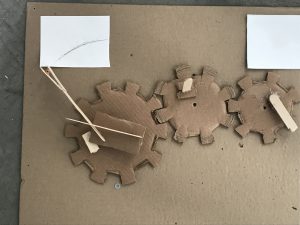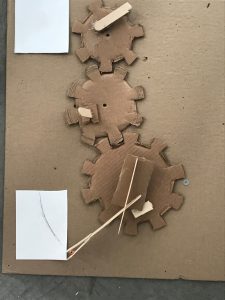

 This machine was meant to reflect the artist we researched. However, because I wasn’t researching an artist but a philosopher, I was given a level of freedom that my other classmates were not afforded.
This machine was meant to reflect the artist we researched. However, because I wasn’t researching an artist but a philosopher, I was given a level of freedom that my other classmates were not afforded.
I started by thinking about the different random elements I had used in machines prior. Over the course of the year I have been attempting to take more and more control away form the user.
The artist that stood out to me the most was Adora’s presentation of Bruno Munari. His useless machines inspired to create a machine that does not work, no matter how hard you try. I devised a machine to do just that. I wanted to create a machine that
The gears do not fit perfectly together, attempting to use any of the points of access is futile. The pencil is not actually connected to the paper, and constantly runs the risk of falling off. It is rarely even making contact with the paper unless forced. I also made this piece a wall hanging to increase the difficulty. I strategically placed the piece behind a railing under the stairs low to the ground to maximize difficulties in even getting to the machine itself.
I made a machine that hates being used. A machine that does not serve any purpose, except to frustrate anyone trying to use it. It was these two ideas- the idea of something useless and something that refuses to cooperate.
In my presentation I let everyone try the machine first, thinking that they would become frustrated and give up. Instead, I and my machine were thwarted. It took less than three seconds before my classmates just began shaking the pencil around as it was stuck to the machine itself. Which, did disappoint me. I was told that the difficulty of the machine made them feel like it was their fault it wasn’t working, not the machine. I was also told that the difficulty of using the machine made them just want to make it work.
I wanted to stress the importance of the symbiotic relationship between machines and people through my project. I think my project was a huge success.


